Optics
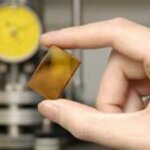
Though every month we read about some new advance in artificial intelligence, how much progress is really being made? Neuromorphic computing has created software and electronic hardware that mimic brain functions and signal protocols but, like economic models that successfully predict the past, they have only slightly improved the efficiency and adaptability of conventional technology and are not really making bold advances.
Compared to our biological systems, today's computers still can't think after 70 years of promise, and they are still more than a million times less efficient…
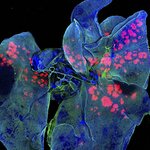
Since they were pioneered by Robert Hooke 350 years ago, microscopes have been extending our vision. In the 21st century, scanning electron microscopy (SEM) and confocal microscopy, which uses a pinhole to remove out-of-focus light and allows 3D structures to be built from multiple images, have pushed the boundaries of resolution.
Further still, nanoscopes that use fluorescence to circumvent limitations in SEM are already winning Nobel prizes.
The Wellcome Images Awards 2015 are a showcase of the best in science imaging techniques, and this year’s crop of winners gives a rich glimpse into a…
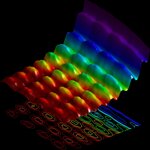
Quantum mechanics tells us that light can behave simultaneously as a particle or a wave, but researchers haven't been able to capture both natures of light at the same time; the closest we have come is seeing either wave or particle at different times.
When UV light hits a metal surface, it causes an emission of electrons. Albert Einstein explained this "photoelectric" effect by proposing that light - thought to only be a wave - is also a stream of particles. Even though a variety of experiments have successfully observed both the particle- and wave-like behaviors of light, they have never…
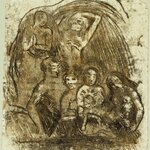
French artist Paul Gauguin has had quite the resurgence - having a painting sell for nearly $300 million will do that - but the artist noted for his colorful paintings of Tahitian life was also a highly experimental printmaker.
The techniques and materials Gauguin used to create his unusual and complex graphic works are little studied but a team from Northwestern University and the Art Institute of Chicago used a simple light bulb, an SLR camera and computational power to uncover new details of Gauguin's printmaking process -- how he formed, layered and re-used imagery to make 19 unique…
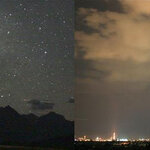
A team has undertaken what they call the most comprehensive examination of skyglow - variations in the radiance of the night sky
- ever done and found remarkably large variations in artificial night sky brightness at the different observation sites.
Light became popular because it allowed us to extend the day - and electricity meant people could read a book without falling asleep and setting themselves on fire. But the introduction of light into the nighttime environment is one of the most striking changes humans have made to the Earth’s physical environment, and it is associated…
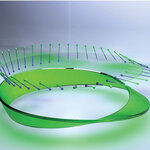
A collaboration of researchers have experimentally produced Möbius strips from the polarization of light, confirming a theoretical prediction that it is possible for light's electromagnetic field to assume this peculiar shape.
Möbius strips are easy to create, of course. Millions of school children do it in classrooms every year by taking a strip of paper, twisting it once and joining up the ends. That's it, you have created a Möbius strip: a three dimensional structure that has only one side.
But finding Möbius strips occurring naturally is another issue.
Möbius strips, as the one…
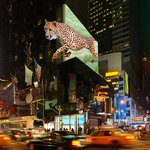
Engineers in Austria have given us a blessing and a curse - they have created a giant laser system that sends beams in different directions, which makes them visible from many different angles.
The angular resolution is so fine that the left eye is presented a different picture than the right one, creating a 3D effect.
In 2013, the start-up company TriLite Technologies had the idea to develop this new kind of display, which sends beams of light directly to the viewers' eyes. They got some help from the Vienna University of Technology. The first prototype only has five pixels by three,…
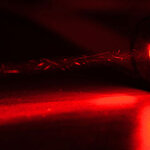
By Charles Q. Choi, Inside Science - A laser could be created with air in a practical way, a new advance that could one day be used to help spot explosives or pollutants from afar, researchers say.
Laser light is generated by pumping energy into atoms or other objects. A chain reaction can occur in which energized atoms all stimulate each other to give off laser light.
One way laser light differs from normal light is that all the light waves in a laser beam are the same frequency — that is, color. Another difference is that all the light waves in a laser beam are coherent — the peaks and…
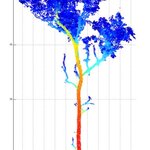
A terrestrial laser scanning technique that allows the structure of vegetation to be 3D-mapped to the millimeter is more accurate in determining the biomass of trees and carbon stocks in forests than current methods, according to a paper in Methods in Ecology and Evolution.
The study authors believe it could be used in monitoring carbon stocks for climate policy. Both above-ground biomass and carbon stocks are important details for UN-REDD, the United Nations initiative on Reducing Emissions from Deforestation and forest Degradation that is striving to keep the destruction of forests in…
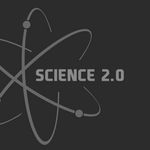
A new optical technique by which audio information can be extracted from high-speed video recordings, by using an image-matching process based on vibration from sound waves.
The technique is based on the fact that sound waves are mechanical waves that cause air to vibrate when traveling, the paper notes. That vibration through air can cause vibration of objects located in its traveling path, especially if the objects are lightweight, thin, and flexible, such as a piece of paper. The vibrations, although usually with small amplitudes, can be detected and analyzed algorithmically, and audio…